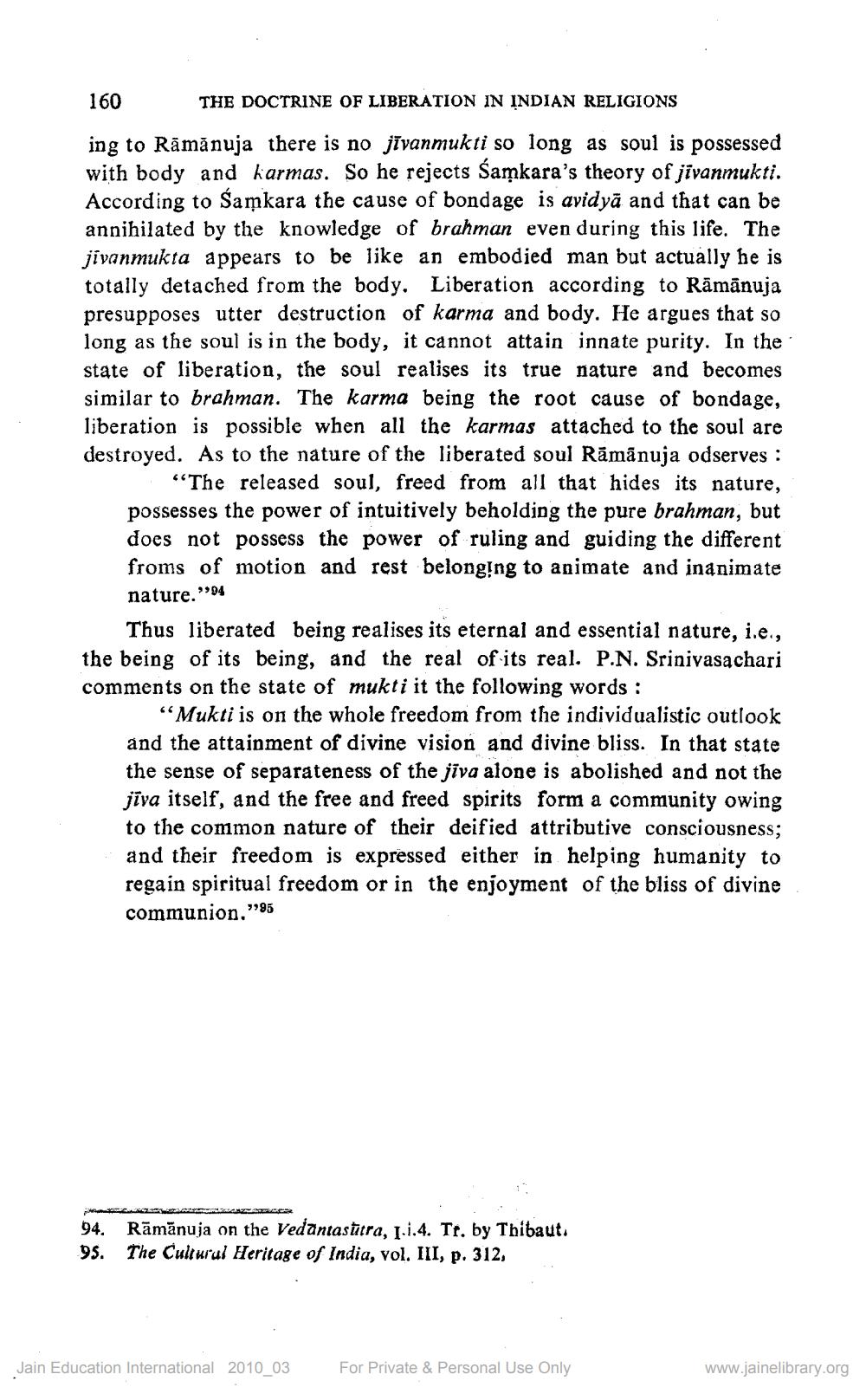________________
160
THE DOCTRINE OF LIBERATION IN INDIAN RELIGIONS
ing to Rāmānuja there is no jīvanmukti so long as soul is possessed with body and karmas. So he rejects Samkara's theory of jivanmukti. According to Samkara the cause of bondage is avidyā and that can be annihilated by the knowledge of brahman even during this life. The jivanmukta appears to be like an embodied man but actually he is totally detached from the body. Liberation according to Rāmānuja presupposes utter destruction of karma and body. He argues that so long as the soul is in the body, it cannot attain innate purity. In the state of liberation, the soul realises its true nature and becomes similar to brahman. The karma being the root cause of bondage, liberation is possible when all the karmas attached to the soul are destroyed. As to the nature of the liberated soul Rāmānuja odserves :
“The released soul, freed from all that hides its nature, possesses the power of intuitively beholding the pure brahman, but does not possess the power of ruling and guiding the different froms of motion and rest belonging to animate and inanimate nature."94
Thus liberated being realises its eternal and essential nature, i.e., the being of its being, and the real of its real. P.N. Srinivasachari comments on the state of mukti it the following words :
“Mukti is on the whole freedom from the individualistic outlook and the attainment of divine vision and divine bliss. In that state the sense of separateness of the jīva alone is abolished and not the jīva itself, and the free and freed spirits form a community owing to the common nature of their deified attributive consciousness; and their freedom is expressed either in helping humanity to regain spiritual freedom or in the enjoyment of the bliss of divine communion."95
94. Rāmānuja on the Vedantasutra, 1.1.4. Tr. by Thibaut. 95. The Cultural Heritage of India, vol. II, p. 312,
Jain Education International 2010_03
For Private & Personal Use Only
www.jainelibrary.org




